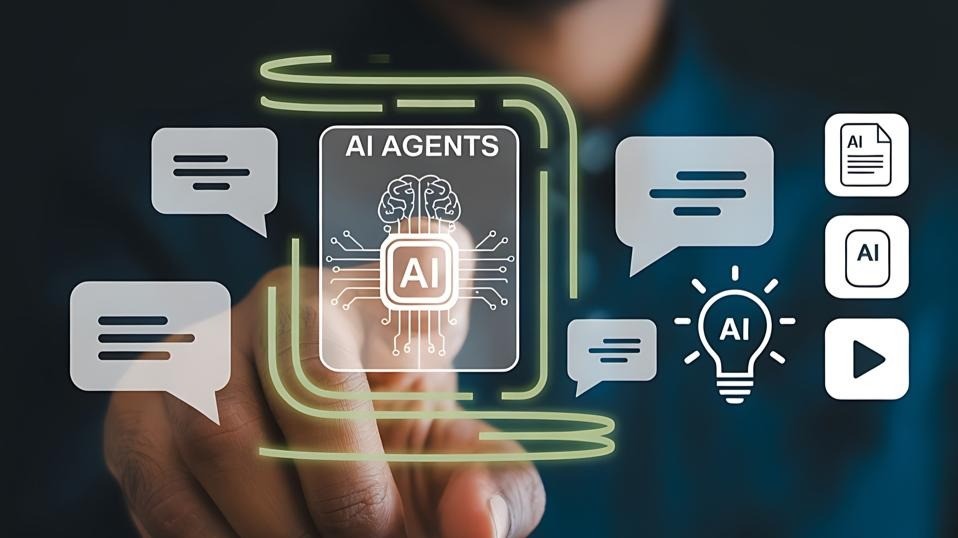7 E-Commerce Trends That Will Transform Shopping In 2026
25 November 2025
Retail’s AI-driven digital transformation is well underway. In 2026, more than ever, customers are looking to technology for smoother, hassle-free shopping experiences, while businesses harness it to drive efficiency and hone their competitive edge.
At the same time, the barriers between physical retail and e-commerce are blurring, and shifts in the way algorithms put products in front of us are shaking up the industry.
So here’s a look at what I believe will be the biggest trends affecting online and offline retail as well as customer behavior over the coming year.

1. AI Agents As Personal Shoppers
Agents—think chatbots like ChatGPT that can take action and interact with third-party services—are the next leap forward in online shopping. Instead of spending hours poring through search results to find the best deals on groceries or holidays, agents will browse and buy for us. For retailers and customers alike, adapting to this new opportunity will be a critical trend in 2026.
2. Agentic Payment Protocols
If agents are making buying decisions, how do we know we can trust them to get it right? Well, their behavior will be defined by Agentic Payment Protocols. Google has just unveiled its framework for doing just this, in partnership with payment services including Mastercard, American Express and Coinbase. This technology framework will be essential for building trust with customers and helping e-commerce retailers build agentic infrastructure.
3. Virtual Influencers And Social Commerce
Social media is no longer just a way to share and communicate with friends, with all the major networks now offering shopping platforms. Facebook, TikTok and Instagram have become powerful new retail channels that can reach audiences wherever they happen to be. Here, the star salespeople may not even be human, but virtual and AI-powered influencers that can work 24/7 without rest, host livestream events, and drive hot new trends.
4. Experiential Retail And “Phygital” Convergence
Our buying decisions are no longer simply driven by price or quality, but by the overall experience of interacting with retailers and brands. Retailers are transforming stores into immersive destinations and experiential showcases for their products, often breaking down barriers between physical and digital shopping experiences in the process. This means letting customers buy in-store for delivery to their home, or return website purchases in-store. This trend is about blending online and offline retail into an experience that’s both seamless and memorable.
5. Zero-Click Commerce
AI is rewriting the rules of search, and for retailers in 2026, this could mean less website traffic and fewer opportunities to sell. The solution will involve adapting selling strategies to be AI-friendly. This includes building feeds that chatbots and agents can interact with, and ensuring product listings contain the specific data that algorithms are looking for. No one really knows what the long-term impact of zero-click will be, but keeping ahead of the curve on the latest developments will be essential for anyone selling online in 2026.
6. In-Store Automation And Frictionless Shopping
From cashierless stores to robotic inventory management systems and AI customer assistants, technology will continue to remove friction from the in-store shopping experience in 2026. While some retailers may see this as an opportunity to reduce staff headcounts, the more forward-thinking will redeploy staff to more valuable tasks that generate loyalty in ways that machines still can’t emulate.
7. Sustainability And Circular Retail
With buying decisions increasingly influenced by concerns over sustainability and the environment, retailers are moving towards circular models to demonstrate that their values are in line with those held by customers. This ranges from trade-in offers encouraging the return of old items in exchange for discounts on new purchases, lifetime warranty and repair services to extend product life cycles, and resale platforms offered by luxury retailers.
The retail revolution of 2026 is about fundamentally reimagining the relationship between retailers and customers through AI-powered personalization, seamless physical-digital integration, and authentic commitment to sustainability. Whether you're a retailer preparing your infrastructure for AI agents or a consumer curious about the future of shopping, the transformation underway will reshape commerce in subtle and profound ways. The businesses that thrive will be those that embrace these changes early and use them to create experiences that genuinely serve their customers' evolving needs.
Related Articles
The Marketing Metrics That Will Matter Most In The Age Of AI Agents
By now, “smart” versions exist of just about every home appliance, gadget and gizmos we can think of. However, manufacturers continue[...]
AI Agents Are Already Reshaping Business Leadership And Decision Making
By now, “smart” versions exist of just about every home appliance, gadget and gizmos we can think of. However, manufacturers continue[...]
What Is Quantum As A Service And Why Does It Matter For Your Business
By now, “smart” versions exist of just about every home appliance, gadget and gizmos we can think of. However, manufacturers continue[...]
What Is Zero Click And Why Is It Turning Marketing On Its Head?
By now, “smart” versions exist of just about every home appliance, gadget and gizmos we can think of. However, manufacturers continue[...]
What Is AI Agent Washing And Why Is It A Risk To Businesses?
By now, “smart” versions exist of just about every home appliance, gadget and gizmos we can think of. However, manufacturers continue[...]
Mind-Blowing AI Statistics Everyone Must Know About Now In 2025
By now, “smart” versions exist of just about every home appliance, gadget and gizmos we can think of. However, manufacturers continue[...]
Sign up to Stay in Touch!
Bernard Marr is a world-renowned futurist, influencer and thought leader in the fields of business and technology, with a passion for using technology for the good of humanity.
He is a best-selling author of over 20 books, writes a regular column for Forbes and advises and coaches many of the world’s best-known organisations.
He has a combined following of 4 million people across his social media channels and newsletters and was ranked by LinkedIn as one of the top 5 business influencers in the world.
Bernard’s latest book is ‘Generative AI in Practice’.










Social Media